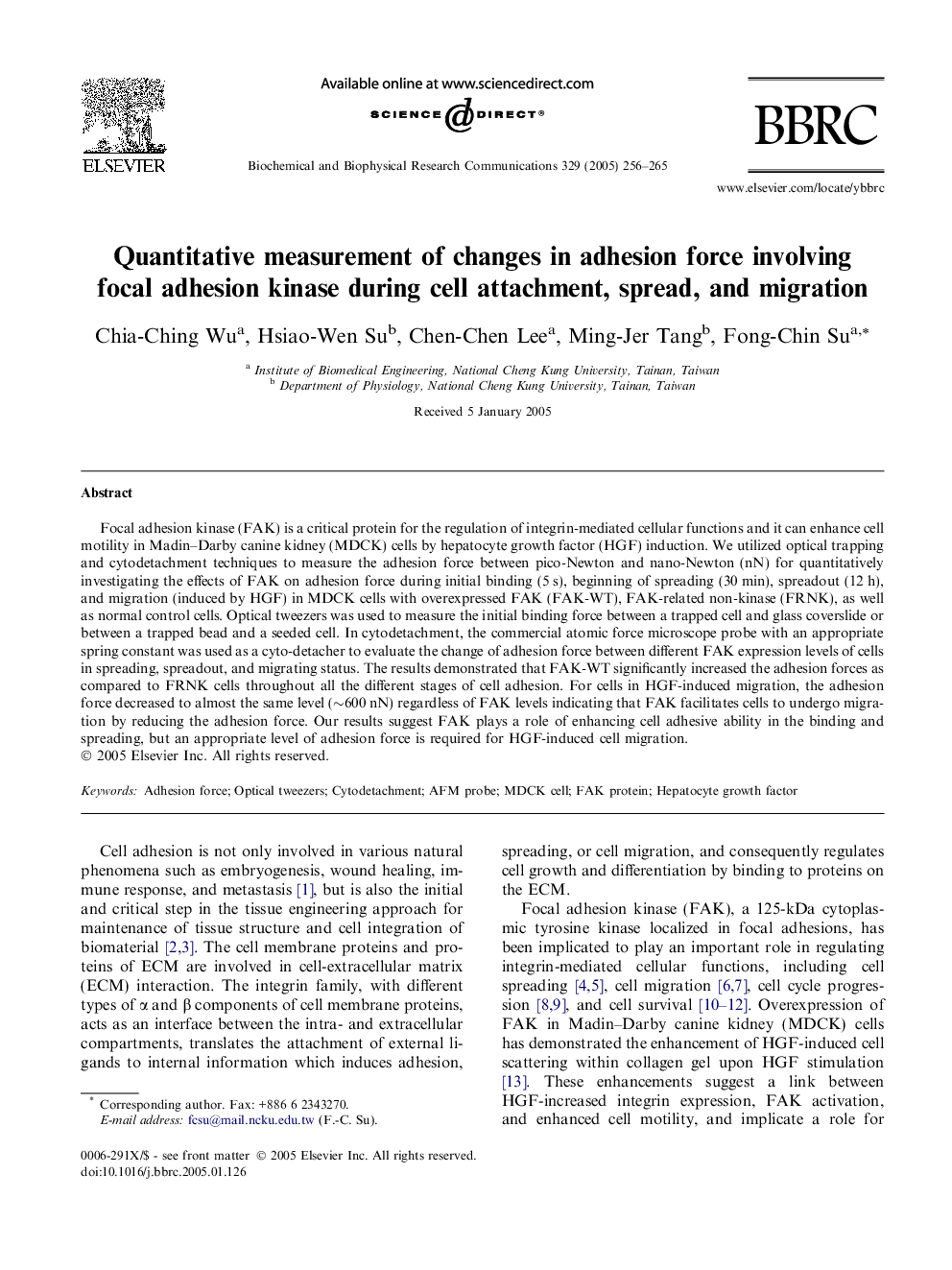| Article ID | Journal | Published Year | Pages | File Type |
|---|---|---|---|---|
| 10771798 | Biochemical and Biophysical Research Communications | 2005 | 10 Pages |
Abstract
Focal adhesion kinase (FAK) is a critical protein for the regulation of integrin-mediated cellular functions and it can enhance cell motility in Madin-Darby canine kidney (MDCK) cells by hepatocyte growth factor (HGF) induction. We utilized optical trapping and cytodetachment techniques to measure the adhesion force between pico-Newton and nano-Newton (nN) for quantitatively investigating the effects of FAK on adhesion force during initial binding (5Â s), beginning of spreading (30Â min), spreadout (12Â h), and migration (induced by HGF) in MDCK cells with overexpressed FAK (FAK-WT), FAK-related non-kinase (FRNK), as well as normal control cells. Optical tweezers was used to measure the initial binding force between a trapped cell and glass coverslide or between a trapped bead and a seeded cell. In cytodetachment, the commercial atomic force microscope probe with an appropriate spring constant was used as a cyto-detacher to evaluate the change of adhesion force between different FAK expression levels of cells in spreading, spreadout, and migrating status. The results demonstrated that FAK-WT significantly increased the adhesion forces as compared to FRNK cells throughout all the different stages of cell adhesion. For cells in HGF-induced migration, the adhesion force decreased to almost the same level (â¼600Â nN) regardless of FAK levels indicating that FAK facilitates cells to undergo migration by reducing the adhesion force. Our results suggest FAK plays a role of enhancing cell adhesive ability in the binding and spreading, but an appropriate level of adhesion force is required for HGF-induced cell migration.
Related Topics
Life Sciences
Biochemistry, Genetics and Molecular Biology
Biochemistry
Authors
Chia-Ching Wu, Hsiao-Wen Su, Chen-Chen Lee, Ming-Jer Tang, Fong-Chin Su,
